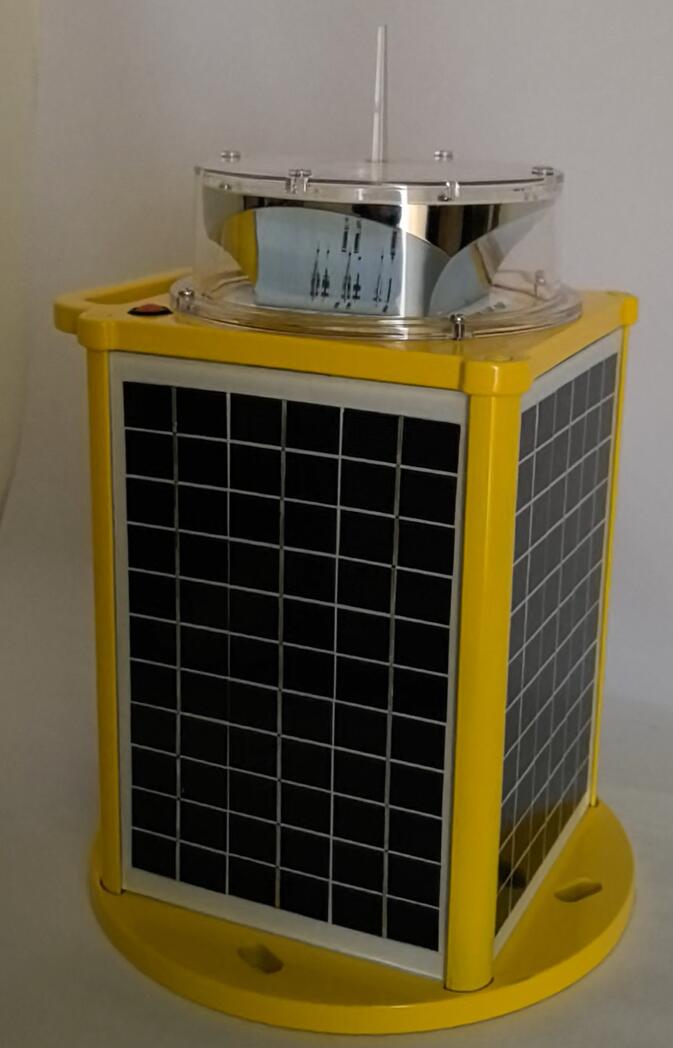Solar Powered Aircraft Warning Lights: Paving the Way for Safer Skies
In the complex and critical domain of aviation, safety is the cornerstone upon which every operation depends. Among the various safety - enhancing elements, solar powered aircraft warning lights have emerged as a remarkable and indispensable innovation.
Solar powered aircraft warning lights are the result of meticulous engineering that combines solar energy technology with aviation - specific requirements. The solar panels used in these lights are crafted from state - of - the - art materials. These materials possess excellent photovoltaic properties, enabling them to efficiently convert sunlight into electrical energy. The panels are designed to be highly durable, capable of withstanding the extreme conditions that aircraft encounter during flight. This includes exposure to intense ultraviolet radiation at high altitudes, significant temperature variations ranging from extremely cold during cruising heights to hot during ground operations, and the mechanical stress induced by the aircraft's movement through the air. They are strategically positioned on the aircraft's exterior to optimize sunlight absorption. For instance, on the upper surfaces of the wings and the fuselage's top sections where sunlight can reach them directly during most of the flight phases.

The electrical energy generated by the solar panels is stored in specialized rechargeable batteries. These batteries are carefully selected for their ability to store a sufficient amount of energy to power the warning lights during periods of low sunlight or at night. They are designed to have a long lifespan and high energy density. The battery management system is a sophisticated component that ensures the batteries are charged and discharged properly. It prevents overcharging, which could damage the batteries, and undercharging, which might lead to insufficient power for the warning lights. This system also monitors the battery's health and alerts the maintenance crew if any issues arise.
| solar powered warning lights | DCF43 |
The warning lights themselves are based on advanced LED technology. LEDs are known for their high luminous efficiency, which means they can produce bright light while consuming relatively low amounts of power. The color of the lights follows strict international aviation standards. Red lights are installed on the left wingtip, green on the right wingtip, and white at the tail. This color - coding system is crucial for pilots and air traffic controllers to identify the aircraft's position and direction quickly. The brightness of the lights is adjustable according to the ambient light conditions. During daylight, the lights operate at a lower brightness to conserve energy, but they can increase their intensity significantly during low - visibility scenarios such as fog, snow, or during night - time flights.
One of the most significant advantages of solar powered aircraft warning lights is their positive impact on the environment. In today's world, where reducing carbon emissions is a top priority, these lights play a vital role. Traditional aircraft warning lights that rely on fossil - fuel - based power sources contribute to greenhouse gas emissions. In contrast, solar - powered lights utilize the renewable energy of the sun, making them an eco - friendly alternative. This not only helps the aviation industry in its efforts to become more sustainable but also reduces the overall environmental impact of air travel.
From an economic perspective, solar - powered aircraft warning lights offer long - term cost savings. Although the initial investment in installing these systems may be higher than that of traditional lighting systems, the long - term benefits are substantial. Airlines and aircraft operators can save on fuel costs associated with powering traditional lights. Moreover, the reduced need for frequent battery replacements results in lower maintenance costs. The durability of the solar panels and the long lifespan of the rechargeable batteries contribute to these cost - saving advantages.
In terms of reliability, solar powered warning lights have proven to be highly dependable. The combination of solar panels, batteries, and LED lights creates a robust system. The built - in redundancy in the power supply, with the batteries acting as a backup during periods of low sunlight, ensures that the lights remain operational. This reliability is crucial in aviation, where any failure of warning lights could lead to dangerous situations such as mid - air collisions. The simplicity of the design also reduces the likelihood of mechanical failures compared to more complex traditional lighting systems.
Solar - powered aircraft warning lights have a wide range of applications. They are not only used in commercial airliners but also in general aviation aircraft, including small private planes and business jets. Additionally, they are becoming increasingly popular in unmanned aerial vehicles (UAVs). For UAVs, which are used in various applications such as surveillance, mapping, and delivery services, having reliable and energy - efficient warning lights is essential to ensure their safe operation and avoid collisions with other aircraft or obstacles.
In conclusion, solar powered aircraft warning lights are a revolutionary development in the aviation industry. Their ability to harness solar energy, combined with their environmental friendliness, cost - effectiveness, and high reliability, makes them an ideal choice for modern aircraft. As the aviation industry continues to evolve and strive for greater safety and sustainability, these lights will undoubtedly play an even more crucial role in ensuring the safety of flights and the protection of our environment. Their continued development and improvement will further enhance the efficiency and security of air travel, making the skies safer for all.
